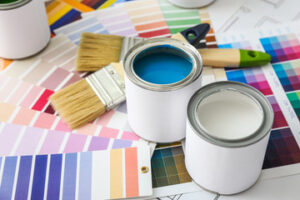Dfw Event Design process is crucial to creating an unforgettable experience for your attendees. It’s a creative and interactive process that involves several different elements.
A great event design is not just aesthetically pleasing, but it’s also strategically planned and designed to facilitate higher attendee engagement. To achieve this, you need to consider these key factors: Furnishings, equipment and structures.

The layout of event spaces is critical for creating the right atmosphere. It defines how functional, accessible, and interactive space is while also guiding attendees’ movement. The layout of an event can be influenced by a number of factors, including the location, theme, and structure of the event. The layout of furnishings, equipment, and decor can also impact it.
Using the space effectively also involves considering the proportions of your event spaces. The way in which you use lines, textures, and patterns can impact the scale of a room. For example, a striped rug can be used to elongate the room, while a vertical line of hanging lights can make a room feel taller.
Once you have a good idea of what the layout of your event will look like, it’s time to create a floorplan. This is a key document that will map out where everything you’re bringing into your event space is going to go and help you to see if the design you’ve come up with is fully viable. Make sure that you’ve got your measurements spot on to avoid any headaches once the build is underway.
The more thought you put into the layout of your event space, the easier it will be for attendees to navigate. From finding their seats, to locating the bathroom, the Master of Ceremonies or entertainers, it’s essential that guests can move around easily. Leaving plenty of open space can help to avoid any cramped conditions and creates a more airy and inviting event.
Creating an event design framework allows you to build events that deliver on their promise to create meaningful and engaging experiences for attendees. It can be a great way to guide your team’s decision-making throughout the planning process and ensure that all of your attendees are having an excellent experience at your event. The Event Design Canvas is an ideal tool for this, helping to define the key event elements and how they work together to achieve the desired outcome. The more you understand about your attendee’s journey, the better you can craft an experience that resonates with them.
The type of lighting chosen is a vital element that impacts the overall look and feel of an event. It can highlight key areas of a space, and can help to create an impactful brand message. It can also add depth to a room and set the mood for the event.
A good event design plan will take into consideration the venue and AV requirements, as well as the specific needs of the audience. This will help ensure that all the event components are working together to meet the goals of the organization and its audience. It will also provide a guide for the event designer to create an impactful and unique experience.
This is a vital step in creating a successful event, as it is where the details of the event are determined. This includes everything from the agenda to the speakers and engagement strategies. It is also important to include stakeholders in the planning process, such as other teams from the company, product teams (especially for events related to new product launches), and business partners that may be co-hosting or participating.
A key aspect of this phase is the development of a content strategy to engage audiences in digital formats. It is important to focus on creating compelling and valuable content that will resonate with audiences, and will encourage them to attend the event and share their experience.
During this phase, the designer will begin to experiment with various design elements to see what will work best for the event. They will research competitor’s events and current trends to get inspiration for the event design. The designer will also create a mood board that will serve as a visual representation of the event’s style, textures, and colors.
The professional will also consider the natural light of the space by looking at where the windows are located and how they are positioned in the room. It is important to avoid shade, as this will make the room less attractive to guests. They will also consider the use of uplighters, projecting images on dance floors (gobo lighting), and incorporating interchangeable color with LED lighting.
A big part of event design is creating the right lines. This includes both the physical lines of your venue and the visual lines created by furnishings and décor. These lines can have a big impact on your attendees’ perception of space, making small rooms feel larger and vice versa. Lines can also be used to create an overall flow or theme for your event, ensuring that everything feels connected and cohesive.
The right line is also important for your event’s tagline. This should be short, memorable, and communicate your event’s main strengths in a quick and engaging way. It should also include a call to action that will encourage people to join you. For example, “Learn to Lead” or “Connect to Engage.”
Form is another important element of event design, as it can add drama and character. This can be achieved by using unusually or boldly shaped furniture, structures, or even lighting. For example, uplighters with gobos can be used to project a horizontal or vertical path through the room. The lighting alone can alter the perception of space, so it’s important to experiment with different angles and types of lighting when designing your event.
Another important aspect of event design is color, as it can create a sense of mood or atmosphere. It’s important to choose colors that complement each other, but don’t clash or overwhelm. Also, try to avoid using too many shades of one color, as this can make your event look muddy and unorganized.
Event design is a complex process, but it’s well worth the effort. When done correctly, it can transform an ordinary venue into something inspiring. It can also increase attendee engagement and overall satisfaction. So, whether you’re planning a corporate event or a wedding, it’s worth taking the time to perfect your event design.
Ultimately, the best event designs are a balance of symmetry and asymmetry. It’s all about finding that perfect balance, and bringing your vision to life through careful planning. To do so, it’s crucial to understand the principles of design. By following these simple guidelines, you’ll be well on your way to creating an unforgettable event!
Patterns are a great way to add interest and visual rhythm to an event design. Whether they’re used on chargers or napkins for the tablescape, on rugs and drapes to brighten up a room, or on paper materials like invitations and place cards, patterns can complement any theme or color palette and help create a sense of continuity throughout the space. But when it comes to mixing patterns, there are some rules that should be followed in order to achieve a cohesive look.
The guaranteed delivery pattern is a crucial concept in event-driven architecture, which focuses on the transmission of events that represent significant occurrences or state changes within a system. The goal is to guarantee that these events reach their intended recipients reliably, even in the face of failures or disruptions. This can be achieved through various mechanisms, including redundant message queues, buffering, and retry logic.
Another important design pattern in event-driven architecture is the saga pattern, which ensures consistent outcomes for an application or process. This is particularly useful in error-handling situations, where the outcome of an event may depend on a sequence of other events that must occur correctly to guarantee a certain result. The saga pattern can also be used as a fault-tolerance mechanism to deal with unexpected or unplanned failures in the system.
In the event-driven architecture (EDA) pattern, events are used to decouple applications and services, allowing them to respond to events as they occur. This is a more flexible approach than traditional request/response systems, which require the application components to request updates and wait for a response.
The publish/subscribe pattern is one of the most common EDA patterns. It enables publishers and subscribers to communicate with each other asynchronously by publishing events to an event broker, which distributes the events to interested subscribers. The subscriber can then either read current events from the stream or reference previous messages in the log.
The competing consumers pattern is a scalability pattern that involves distributing the processing of events across multiple consumers to improve throughput and reduce latency. This is especially useful in high-volume event streams where a single consumer may not be able to handle the volume of events. The competing consumer model allows each consumer to process events in parallel, thereby increasing scalability and performance.



